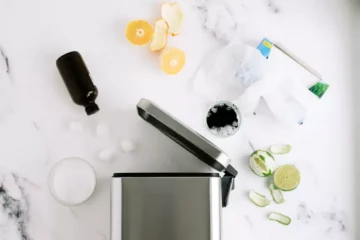How Often to Defrost and Clean Your Freezer
Self-defrosting freezers should be cleaned at least once a year. Manual-defrost freezers should be defrosted and cleaned at least once per year or if there is more than one-fourth inch of frost over a large area of the interior surface. Freezer frost reduces storage space and increases operating costs.
If there has been a power outage, follow recommended guidelines for food safety1. If the food has thawed before power was restored, the freezer should be emptied and cleaned before restocking.
Before You Begin
Before defrosting a freezer, consult the manual provided by your manufacturer. If you don’t have it readily available, almost all manuals can be found online. Some manufacturers recommend using hot water to speed up the defrosting method while others do not because refrigerant pressure could build up in the evaporator, making restarting the freezer difficult.
What You’ll Need
Equipment / Tools
- 3 to 4 absorbent towels
- 1 microfiber cloth
- 1 heat-proof bowl
- 1 wooden or plastic scraper
- 1 to 3 insulated ice chests
- 1 dishpan or bucket
Materials
- 1 box of baking soda
- 1 bottle of distilled white vinegar
- 1 container of activated charcoal
- 1 to 5 bowls of hot water
1. Store Frozen Food Safely
Gather several insulated ice chests to hold the frozen items during the defrosting process. If you don’t have access to ice chests, use cardboard boxes and cover them with layers of newspaper or blankets to insulate the frozen food.
2. Safety First
- Once the freezer is empty, if it is a stand-alone freezer, unplug the appliance.
- If the freezer is part of a refrigerator, just open the door of the empty freezer. Try to limit the number of times you open the refrigerator door during the defrosting process to keep the temperature regulated.
3. Thaw and Absorb Moisture
- Following the guidelines of the manufacturer, place bowls of hot water in the freezer or simply allow the ambient air to thaw the frosty buildup.
- Place absorbent towels in the bottom of the freezer to catch the moisture as the frost melts.
- If there is excessive frost, use a wooden or plastic scraper to remove large chunks of ice for disposal. Do not use a metal scraper that can harm the interior finish of the freezer.
- If wish to speed up the thawing process, add a circulating fan to the room. While you may have heard about using a hair dryer to speed thawing, do not use one if there is standing water on the kitchen or storage room floor, and keep the heat level low to prevent damage to the freezer interior.
4. Clean and Restock
-
- Once all of the frost is gone, follow the steps for cleaning the interior of the freezer.
- Plug it back in or close the door and allow the temperature to drop for 15 to 30 minutes before restocking the food.
- If the food has frost on the packaging, wipe it off with a damp cloth and dry the package before placing it back in the freezer. These items should be used as soon as possible although freezer burn may have already occurred.
How to Clean a Freezer
1. Mix a Cleaning Solution
Mix one tablespoon of baking soda per quart of warm water in a dishpan or bucket.
2. Clean and Dry the Freezer Interior
- With the freezer empty and frost-free, use a microfiber cloth dipped in the baking soda solution to wipe down every interior surface.
- Be sure to clean the seal around the door and inspect for any damage. It may need to be replaced.
- Rinse out the cloth often as soil and food particles are transferred.
- Dry the interior of the freezer with a clean microfiber towel.
3. Clean the Exterior
Use the same baking soda mixture to wipe down the outside of the freezer to remove dust and smudges.
4. Tackle Odors
If food has thawed and spoiled in the freezer, odors will remain. To remove them:
- Unplug the freezer and dispose of the food.
- Clean the freezer interior with the baking soda and water mixture or a mixture of one cup of distilled white vinegar per gallon of water.
- If the odor remains, place some activated charcoal in an open container in the freezer and close the door for several days. Repeat with fresh charcoal if the odor persists.
WARNING
If the spoiled food has leaked liquid into the insulation of the freezer, it may be impossible to remove the odor. Contact the manufacturer for any possible solutions.


